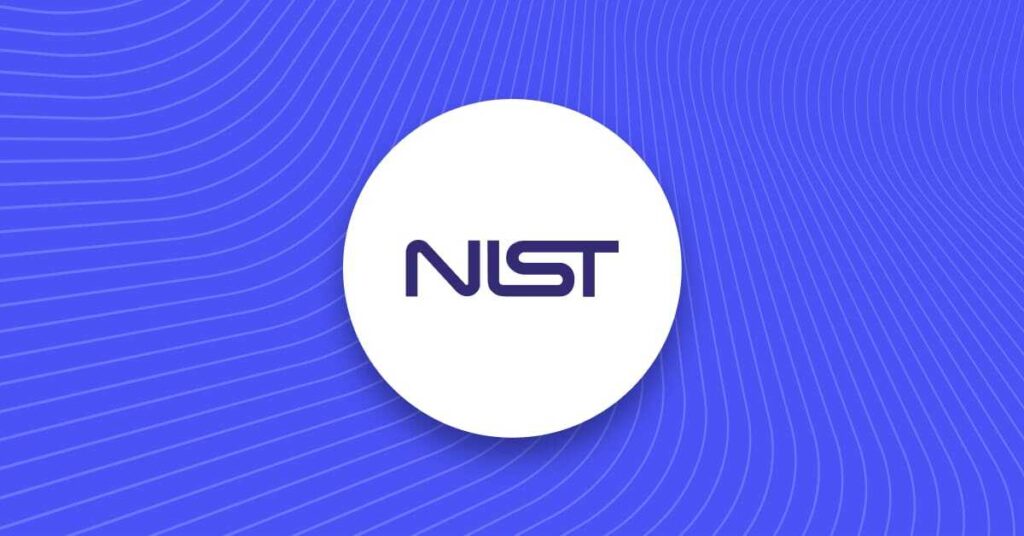
Anti-money laundering (AML) best practices are crucial for every business, mandated by law to safeguard against illicit financial activities. Comprehending who you're transacting with and the origin of their funds is vital, especially in high-risk transactions or dealing with individuals at greater risk of corruption, like politicians. Financial institutions face the unique challenge of balancing rigorous compliance with fostering customer trust.
But before you can comply with anti money laundering standards and expectations, you need to understand what they are and why they exist. You might be looking for a clear answer on the most basic questions, like what is money laundering and why is it illegal? Or, you may be more curious about how to detect potential money launderers during your customer onboarding, without interrupting a transaction and alienating honest customers. In this piece, we’re covering it all from the basics forward.
Grasping the basics: what is money laundering?
Money laundering, a critical concern in financial crime, is the process used by criminals to disguise the origins of illegal funds. Its root cause is straightforward: to evade prosecution or taxation on unlawful income. Major criminal organizations, generating cash from illegal activities such as theft or trafficking, need to integrate these funds into the legitimate financial system. This integration involves disguising or “cleaning” the money through businesses or banks.
Types of money laundering crimes and their impact
Money laundering, a severe financial crime, fuels other criminal activities and is aggressively prosecuted globally. Its extensive consequences undermine the integrity of financial institutions and the global economy. Understanding this becomes clearer when we explore specific examples.
Examples of money laundering cases
Some money laundering cases involving large banks or entities are worthy of news headlines, with sums in the billions. Examples of money laundering cases around the world illustrate what a big problem it is, and the necessity of AML laws.
Three common methods of money laundering
Cash business money laundering
In businesses like restaurants or laundromats, where cash transactions are predominant, criminals may inflate daily deposits to mix illegitimate funds with legitimate ones. A restaurant might bring in $2,000 in profits, but reflect $4,000 in the books and deposit $4,000 in the bank. This mixing of legitimate and illegitimate money gets the dirty funds into the financial system.
Real estate money laundering
Criminal groups might purchase real estate with illegal funds, converting them into seemingly legitimate assets, often facilitated by shell companies.
Gambling money laundering
Using casinos, criminals can launder money by buying chips with illicit funds, gambling, and then cashing out, creating a legal transaction history. This gives the money a “rinse” through the casino and creates a plausible paper trail of how the money was obtained legally. Using different aliases/user names across transactions and visiting different sites or counters to cash chips in and out are some of the red flags around gambling money laundering.
Legal framework: examples of money laundering offenses
Various national and international laws categorize money laundering offenses. For instance, the UK's Proceeds of Crime Act of 2002 outlines three types of money laundering offenses: concealing, arranging, and acquisition, use, or possession offenses. Engaging in any of these activities, even with mere suspicion of the funds' criminal origin, constitutes an offense.
Concealing offense
Any time someone hides, disguises, transfers, or removes criminal property from the country.
Arranging offense
When someone enters into an arrangement which they know or suspect supports a criminal in the acquisition, use, or control of criminal property.
Acquisition, use, or possession offense
Any time someone themselves acquires, uses, or possesses criminal property.
Whether the individual knows or simply suspects that funds or other property have been gained through criminal activity, participating in the concealment, support, or use of the funds can constitute an offense. For more insight about the laws in your nation and industry, it’s best to seek specialized legal advice.
The social and economic implications of money laundering
Money laundering has far-reaching impacts, including eroding trust in financial institutions through corruption, allowing the continuation of underlying crimes, like drug trafficking, and distorting economic growth by creating false investment illusions.
Here are some examples:
- Money laundering erodes financial institutions through corruption and the loss of consumer trust. The presence of these activities within the institution also creates operational risks that the bank or lender itself will be defrauded.
- Money laundering, when undetected, allows the underlying crimes to also continue. In the United States in 2017, two-thirds of underlying offenses were drug trafficking and nearly an additional third were theft, property destruction, and fraud.
- Money laundering distorts investment and depresses authentic economic growth by creating the illusion of investment in properties and businesses (sterile investments) that do not actually benefit the broader economy.
In summation, money laundering harms productive businesses and individuals while allowing criminal elements to flourish.
Global AML efforts: Is there a global money laundering act?
The Financial Action Task Force (FATF) is an international anti-money laundering watchdog organization that works in close connection with the International Monetary Fund (IMF), World Bank, and more than 200 member nations and jurisdictions who have agreed to implement FATF standards. These recommendations “set out a comprehensive and consistent framework of measures which countries should implement in order to combat money laundering and terrorist financing, as well as the financing of proliferation of weapons of mass destruction.”
While these recommendations set the standard, it is up to each nation or jurisdiction to implement the standards through laws and measures that make sense for its unique circumstances. This means that in many cases, money laundering investigations are subject to interpretation under diverse national and international laws. Demonstrating compliance with these regulations during customer acquisition and onboarding processes can seem like a Herculean task, but software and third-party vendors can make this easier than you expect.
What are the three stages involved in money laundering?
The three general stages involved in money laundering are placement, layering, and its ultimate integration into the market. We’ll summarize each, as well as highlight at which stage money laundering is easy to detect.
Money laundering stages
- Placement: In this first stage, the dirty cash needs to be introduced (“placed”) into the economic system. The three money laundering examples we shared earlier of cash business, real estate, and gambling are all examples of placement methods. Others include paying off debt with the cash, or using a foreign currency exchange to convert portions of the cash into another currency. Some money launderers might simply put the cash in a suitcase and take it to a country where there is less regulatory oversight. No matter how they attempt to place the cash, it is during this phase that money launderers are most likely to be caught. The sudden appearance of a large amount of cash to pay off debt, deposit as business profits, or otherwise place is going to attract the attention of authorities. This is especially true under national and international anti-money laundering (AML) regulations.
- Layering: Layering in money laundering is essentially the process of creating a paper trail that separates the funds from their criminal origin and protects the identities of the criminals. This might include using multiple banks or accounts, having individuals act as intermediaries, using shell corporations or legitimate businesses, and making investments in goods like art and jewelry. When funds pass through multiple accounts or have been converted and re-converted into different currencies, this is a clear sign to regulators and law enforcement that money laundering may be at work. Entities like banks and lenders also have an obligation to perform adequate due diligence and confirm customer identity to detect these kinds of activities.
- Integration: In the integration stage of money laundering, the money is reunited with the criminal or organization. By this time, the layering process makes it difficult to discern whether the wealth is illegal or not. Assets like the real estate, cars, artwork, or jewelry purchased in the layering stage can now be leveraged or re-sold by the criminal. Fraudulent invoices may also be sent to shell companies for payment when no services or goods have actually been rendered.
In some cases, these stages may be combined, or repeated before moving onto the next. It can be very challenging to spot a money launderer without digging deep into their financial history and personal information.
How to spot a money laundering business or individual
Businesses must be vigilant in spotting signs of money laundering – it’s not just prudent, but essential under AML laws and regulations. Here are some of the main red flags that indicate additional due diligence is needed.
- Complicated business structures or the inability to identify the actual owner of a business.
- Unusual transaction history, including frequent high-volume transactions, short dwell times of money in a bank account, or selling assets below market value.
- Buying items with intangible values such as art, jewelry, databases, programs, and other assets.
- Unusual monetary losses that are not questioned by investors, such as making the same investment in stock the next year after taking a loss the previous year.
- A high volume of cash transactions, including paying employee salaries in cash.
Platforms like Onfido assist you in catching these red flags during customer onboarding by analyzing user documents, biometrics, trusted data sources, and passive fraud signals.
How to prevent money laundering: know your customer with Onfido
As part of an anti-money laundering compliance process, Know Your Customer (KYC) is a valuable first point of defense for any business. Onfido’s Real Identity Platform includes a library of award-winning identity verification and fraud prevention tools, such as:
- Document Verification: Create confidence in an online customer’s identity by verifying a photo ID. Our platform supports over 2,500 document types in 195 countries.
- Biometric Verification: Protect your business from stolen identities and fraud by comparing a real-time photo or video to the ID on file.
- Data Verification: Fulfill AML compliance by allowing our platform to automatically compare the customer ID against national and international databases along with real-time location data.
This advanced functionality is only a part of the AML features built into the platform – but it doesn’t translate to a more difficult experience for customers. 95% of users are verified within a matter of seconds, while we also help our clients increase their document fraud accuracy 54% year over year.
AML compliance makes the world safer and more secure for everyone, but it doesn’t have to make business more difficult.
Take a virtual tour of Onfido to see just how simple and transformative this solution could be for your organization. It walks through our suite of verifications and signals — and shows how to create workflows in Onfido Studio.





